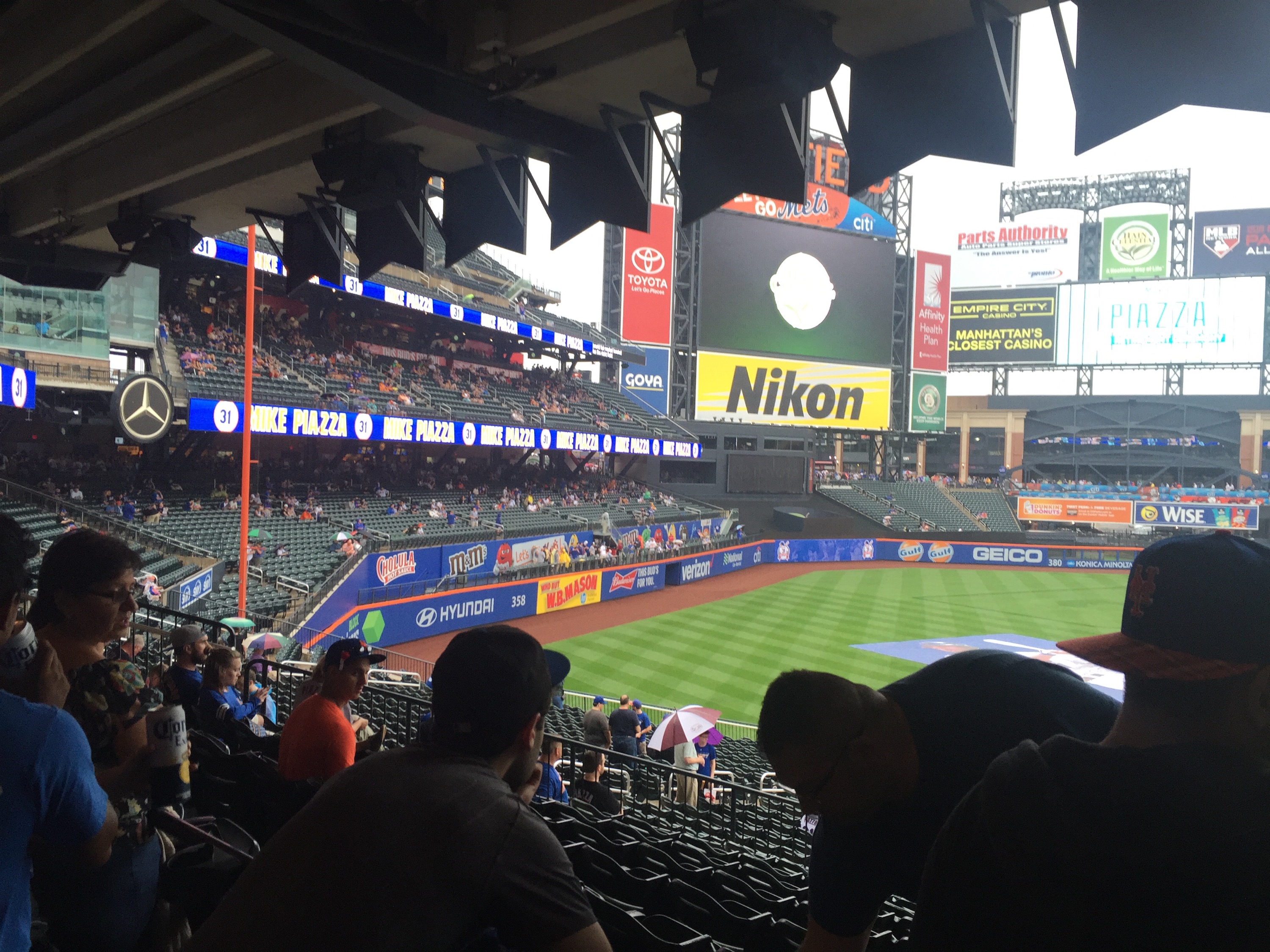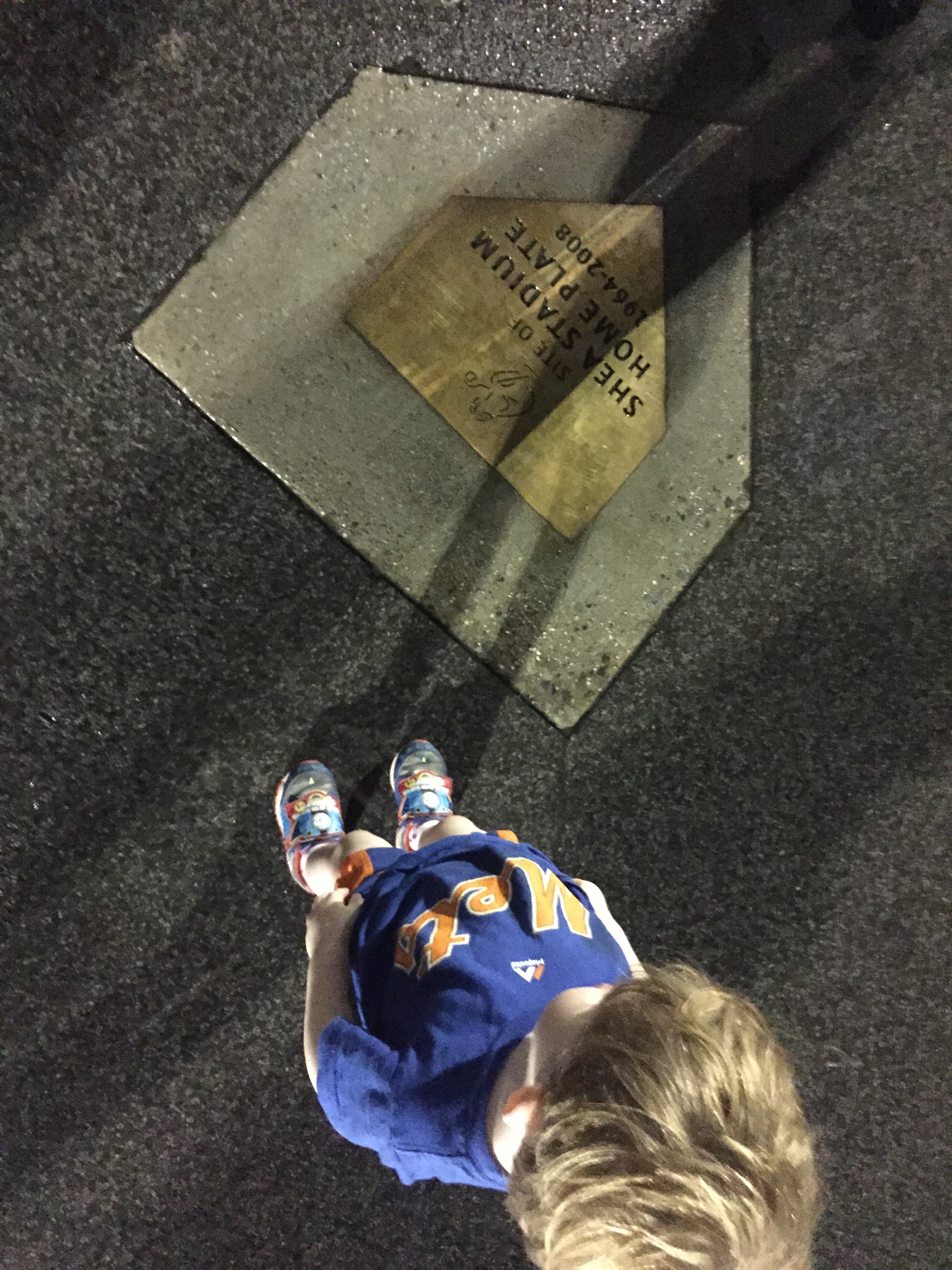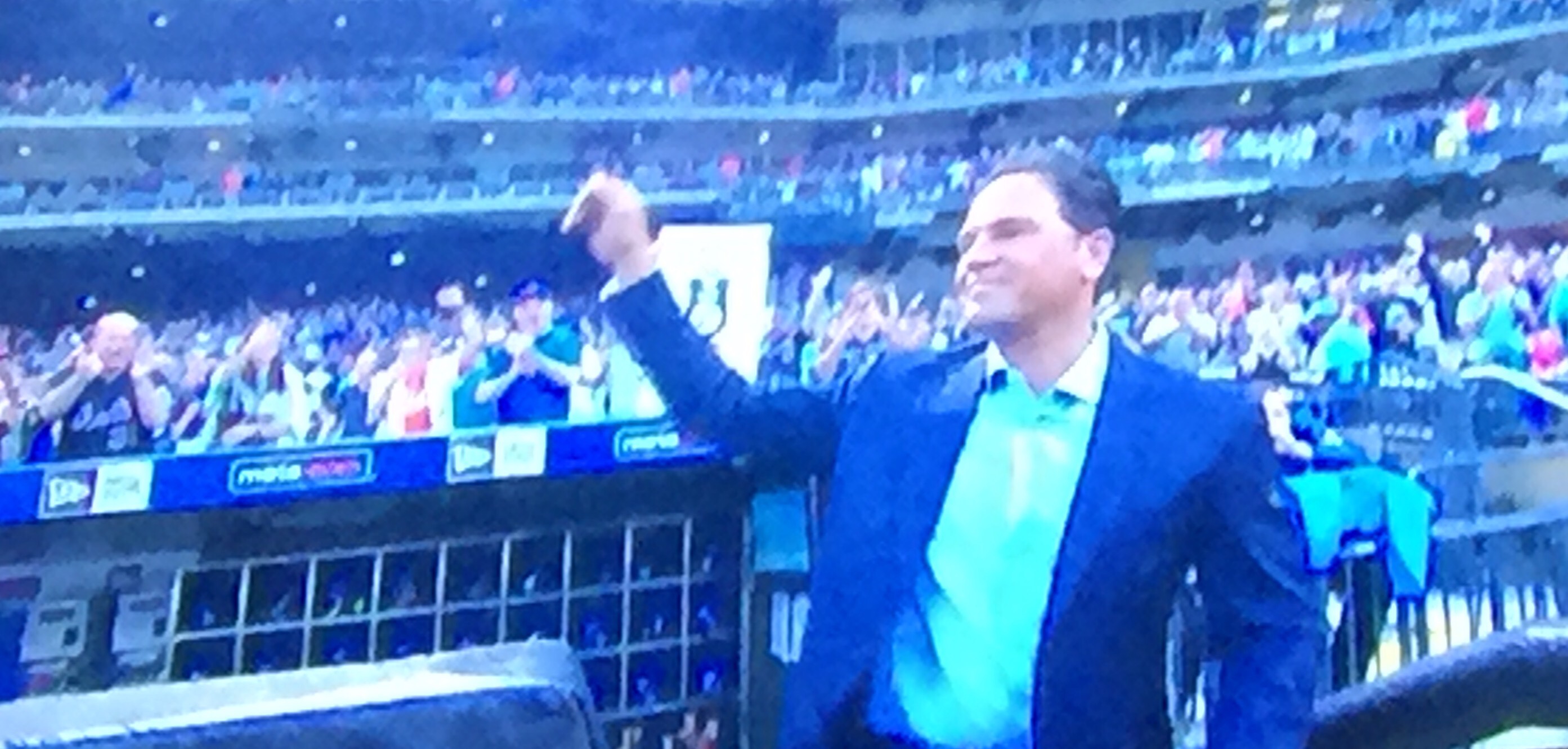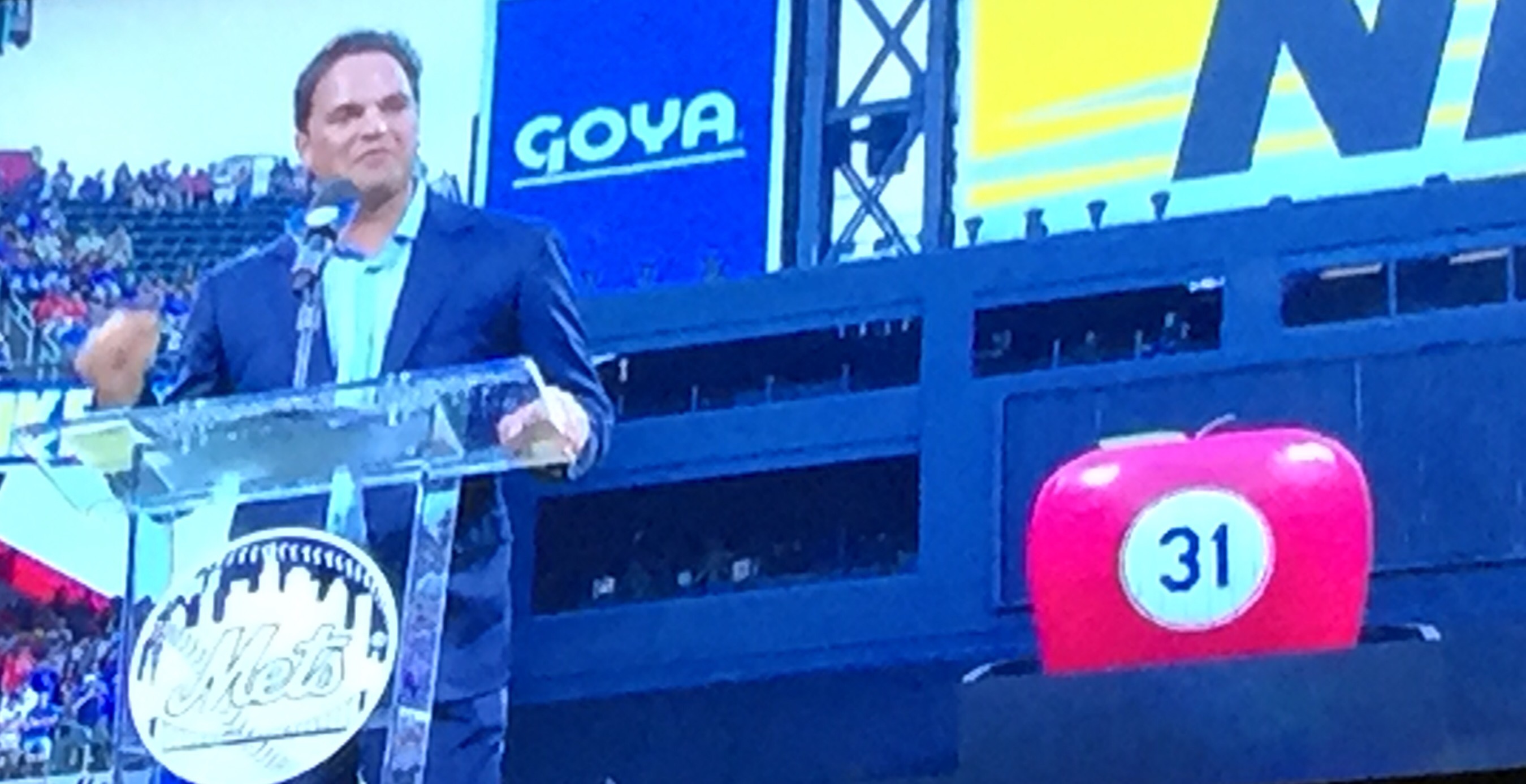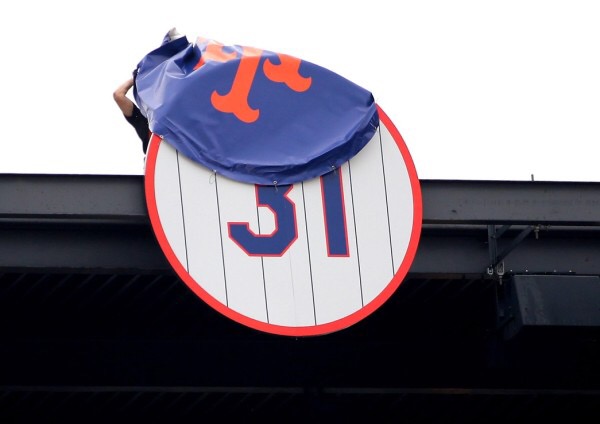Tom Seaver
On August 22, 1973, the Mets won their second game in a row to raise the Mets record to 57-67 leaving them 6.0 games out in the National League East behind the first place St. Louis Cardinals.
From that point forward, the Mets would be the hottest team in baseball going 25-12 carrying them to an unlikely division championship. The Mets rode the hot streak to beat the Big Red Machine 3-2 in a best of five NLCS, and they came within a win of disrupting the Oakland A’s dynasty.
The popular story was the Mets were spurred by Tug McGraw screaming “Ya Gotta Believe!” after a M.Donald Grant “pep talk” in July. However, the truth is that team just got healthy at the right time, and when the team was at 100%, they were among the best teams in baseball.
During that year, the team was hampered by injuries. Jerry Grote, John Milner, Bud Harrelson, and Cleon Jones all missed significant time. Rusty Staub player through injuries all year. On top of that phenom Jon Matlack was having a down year a year removed from winning the Rookie of the Year Award. He was joined by Jerry Koosman in having a surprising down year. Willie Mays looked to be every bit of his 42 years of age. Young fill-ins like Don Hahn just were not producing. The Mets were forced to do anything they could do to improve the team like releasing dead weight like Jim Fregosi. About all that went right that season for the Mets was Tom Seaver; that and the fact that no one ran away with the division allowing the Mets to enter the postseason with an 82-79 record.
Isn’t that what this Mets season has been. With Matt Harvey, David Wright, Lucas Duda, Adrubal Cabrera, and Yoenis Cespedes, we have seen this Mets team be hampered time and again by injuries. We have seen countless Mets play through injuries like Noah Syndergaard and Steven Matz with their bone spurs. We’ve seen replacements like Eric Campbell, Ty Kelly, and Matt Reynolds not play up to snuff. Players like Travis d’Arnaud and Michael Conforto had surprising down years. About the only thing that has gone right for the Mets this year is the fact that Jacob deGrom has continued to pitch like an ace, and the fact that no one has ran away with the second Wild Card spot.
Maybe, just maybe, this is 1973 all over again. That 1973 team was much further back in both the standings and more teams to leapfrog in the standings. All they needed to do was to get healthy and to get hot. Right now, with Cespedes back and hitting home runs for the Mets again, this team is healthy, and they are on the verge of getting hot. If that happens, the Mets can very well take that second Wild Card spot and get into the postseason.
As we saw in 1973 as well as last year, with great Mets pitching, the Mets can beat anyone in the postseason. They can shock the world. Anything is possible so long as they get hot and get into the postseason.
Today, Mike Piazza joins Tom Seaver as the only Mets player to have his number retired. He also joins Gil Hodges and Casey Stengel as the only Mets to have their number retired. He will also join Jackie Robinson, William Shea, and Ralph Kiner in what has become the Mets “Left Field Legends Landing”
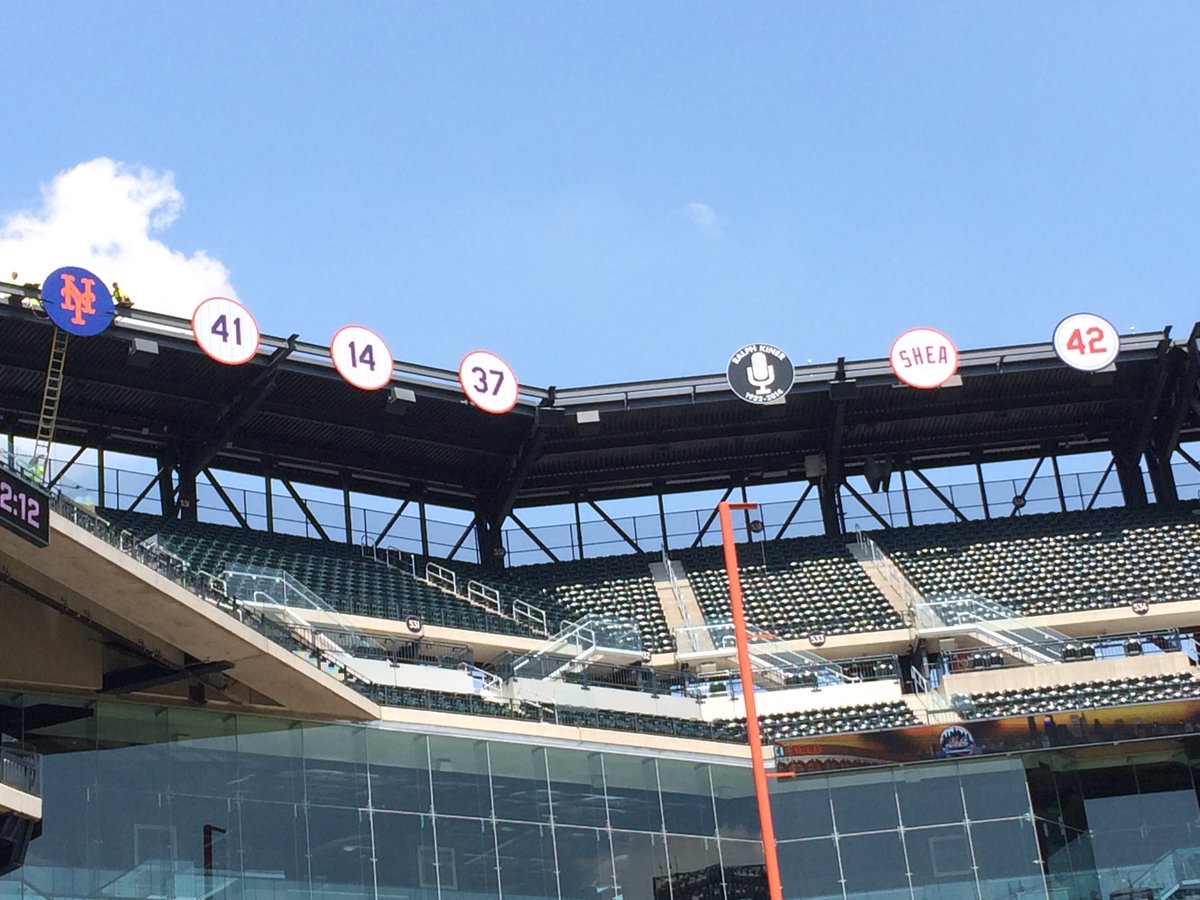
* Photo courtesy of Jeremy Posner.
At least that is what I am calling it.
Piazza is there because he was just inducted into the Baseball Hall of Fame as a Met. He was the second Met all-time and their first position player. He is there because he helped take a “nice little team” and led them to back-to-back postseason appearance for the only time in Mets history. No Met will ever wear his number again due to him being the greatest hitting catcher of all-time who has hit more homers than any catcher in baseball history. He is there for the post 9/11 homer, for all the other important homers, and what he meant to Mets fans. Today, Piazza will officially have his number retired. Personally, I cannot wait to go to Citi Field and cheer him like I did all those games I attended in the late nineties and early 2000s. It couldn’t have happened to a better man or a better Met.
Congratulations Mike Piazza.
The only thing we know right now about Mike Piazza‘s retired 31 is that it is going to be in the Left Field Legends Landing in front of Tom Seaver‘s number 41.

* Photo courtesy of Jeremy Posner
For whatever reason, the Mets are changing how the retired numbers are displayed. It used to be in the order the numbers were retired, and now with Piazza’s ceremony on the horizon, the Mets have changed it to reverse order. It’ll be interesting to see if that is how it remains. What is also interesting is that the Mets have tipped their hands, and they have shown that they are going to do a “uniform” display of the retired numbers:

What is interesting about that is Piazza never specifically wore that jersey. Sure, the Mets would occasionally wear pinstripes during Piazza’s tenure with the Mets, but when they did the number had a dropshadow.
Instead of the jersey number as the Mets will most likely display it, the Mets should have gone with the black jerseys to represent not just Piazza, but also the specific Mets era in which he played:
That’s the jersey Piazza wore in his first playoff game with the Mets (road version of the black jerseys in Game 1 of the 1999 NLDS). It was a game the Mets won highlighted by an Edgardo Alfonzo grandslam. It was the jersey he was wearing when Robin Ventura hit the Grand Slam single. It was the jersey he wore when he hit the three run homer to cap a 10 run eighth inning rally that saw the Mets overcome an 8-1 deficit against the hated Braves. It was the jersey he wore when the Mets won the 2000 Pennant. It was the jersey he wore when he broke Johnny Bench‘s record for most home runs by a catcher. And yes, it was the jersey he wore when he hit the post 9/11 home run.
Overall, if you conjure up your favorite moment of that era or of Piazza in a Mets uniform, chances are the Mets were wearing the black uniforms. It doesn’t really matter that Piazza wore the snow white jerseys more than any other jersey. The Mets need for symmetry should not outweigh properly representing history, and remember, it was their idea to have the black jerseys in the first place. Instead, the 31 that will forever hang in the Left Field Legends Landing should be the Mets black jersey as that is the jersey that most fans associate with Piazza.
Unfortunately, that is not what is going to happen, and with it the Mets will fail to properly reflect their history.
On August 11, 1992, the Mets had a day to honor Tom Seaver for being inducted into the Baseball Hall of Fame. Considering he was the best pitcher in Mets history, you would think the honor of starting that game would go to Dwight Gooden, who was the only Mets pitcher who would break any of Seaver’s records. David Cone was another terrific choice given how great a pitcher he was for the Mets. Bret Saberhagen would have been fitting as he was a two time Cy Young winner and a former World Series MVP. Even Sid Fernandez could have fit the bill as it was his Game Seven performance that helped prevent Seaver from winning one last ring in 1986.
Instead, it was Eric Hillman, who was making his first ever major league start on a dark and rainy night that drove away most of the fans who should have been there to celebrate with Seaver. To be fair, that game would’ve been called almost any other night had it not been Seaver’s night. Between the weather, and who was going to be honored, it was a difficult situation for a young pitcher. Hillman was up to the challenge pitching eight scoreless innings to help defeat the first place Pittsburgh Pirates.
With Monday’s rainout, the Mets will be in a similar position for Mike Piazza‘s number retirement ceremony.
It was supposed to be Noah Syndergaard. Who better to celebrate the career of the Mets rock star catcher than to have the Mets rock star starting pitcher? Who better to honor the power Piazza showed at the plate than the power pitcher who can routinely throw over 100 MPH? The long haired starting pitcher dominating the opponents should have started the game honoring the long haired dominant hitter. It was all too perfect to be true. With the rain, it’s not going to happen.
Instead, the Mets are most likely going to get a spot starter making his first ever major league start similar to what happened with Eric Hillman on Tom Seaver’s night. It just seems to go that way on a night when the Mets honor their Hall of Famers.
The start could to to Seth Lugo, who has pitched extremely well out of the bullpen in his four appearances this year. Gabriel Ynoa could be summoned from the minor leagues to make his first ever start as could his Las Vegas 51s teammate Robert Gsellman. Whoever it turns out to be, they have some large shoes to fill. No, not Syndergaard’s, the 6’10” Hillman’s. Whoever the Mets give the chance to make his first ever career start needs to go out there and put up a dominant performance like Hillman’s to allow the fans to celebrate deep into the night.
Every major league team that has been around long enough has three faces to their franchise. The first is The Immortal player. He is the player you first think of when you mention a franchise. The next is the Living Legend. This player is the one that is revered by young and old. He is the player that throws out the first pitch at first home game of the World Series. He’s in the Hall of Fame, and his number is retired. The last is the best or most popular player on the team. He is the player that has been traditionally dubbed the Face of the Team. Here are a few examples:
| New York Yankees | |
| Immortal | Babe Ruth |
| Living Legend | Derek Jeter |
| Face of the Team | Alex Rodriguez |
| Boston Red Sox | |
| Immortal | Ted Williams |
| Living Legend | Pedro Martinez |
| Face of the Team | David Ortiz |
| St. Louis Cardinals | |
| Immortal | Stan Musial |
| Living Legend | Bob Gibson |
| Face of the Team | Adam Wainwright |
| Los Angeles Dodgers | |
| Immortal | Jackie Robinson |
| Living Legend | Sandy Koufax |
| Face of the Team | Clayton Kershaw |
Yesterday, with Mike Piazza‘s formal induction into the Baseball Hall of Fame and with Tom Seaver unable to attend the Hall of Fame ceremony he loves to attend, the Mets now how their own triumvirate.
Not only is Mike Piazza a Hall of Famer who is about to have his number retired by the Mets, he has also become the Mets resident Living Legend. It’s why he was the former player who threw out the first pitch prior to Game Three of the World Series. Every big moment for the Mets from here on out is going to prominently feature Mike Piazza much in the same way we have seen through the years with players like Ernie Banks, Stan Musial, Yogi Berra, Willie Mays, Hank Aaron, and once upon a time Tom Seaver.
It’s unfortunate to see Seaver unable to travel to attend the ceremony and host his table of 300 game winners, including friend and former teammate Nolan Ryan, from his day like he loved so dearly. It’s sad that he can’t travel cross-country to throw out the first pitch for any of the World Series games or to sit in the owner’s suite and cheer on The Franchise’s Franchise. It’s almost a surety that he will be unable to attend Piazza’s Number Retirement Ceremony this weekend. In some ways, that makes him like Gil Hodges and Casey Stengel – gone but not forgotten.
No one can ever forget Seaver. He’s the best player to ever put on a Mets uniform. He’s The Franchise. He’s quite possibly the greatest right handed pitcher to ever play the game. He is the pitcher who has received more Hall of Fame votes than anyone in baseball history. He is an Immortal. No one, not even Piazza, can ever knock him off that perch.
He is joined by the Living Legend Mike Piazza and the current Face of the Mets Franchise, be it David Wright, Yoenis Cespedes, or Noah Syndergaard to become one of the three all important faces of the Mets franchise. In that way, the Mets have become an older major league franchise with a history worth celebrating.
The things we are willing to tell ourselves as fans can sometimes be quite outlandish. Back in 1997, if you polled Mets fans, they would probably tell you they would rather have Todd Hundley than Mike Piazza. Why not?
The two were the same age. Both were All Stars in 1996 and 1997. In those two years, Hundley had hit 71 homers to Piazza’s 76. Hundley had 198 RBI to Piazza’s 229. Hundley’s 53 doubles surpassed Piazza’s 48. In fact, Hundley’s 127 extra base hits were actually two more than Piazza’s 125. On top of that, Hundley was a switch hitter and a much better defensive catcher. He was the homegrown Met that was afan favorite with his very own Todd Squad cheering section at Shea Stadium. Hundley’s career was taking off, and he was seen by Mets fans as a newer version of Gay Carter. When he returned from his elbow surgery in 1998, he was expected to once again be the slugging defensive minded catcher who was going to lead the Mets to the postseaon for this first time in a decade. If you took a poll of Mets fans, they may begrudging admit Piazza was the better player, but overall, they would also state their belief that they would rather have Hundley as he was their guy. It was all a moot point anyway because there was no way the Dodgers would ever get rid of Piazza.
Until they did. There wasn’t a baseball fan alive in 1998 that was utterly shocked when Piazza was traded to the Florida Marlins along with future Met Todd Zeile for a package that included future Met Gary Sheffield and former/future Met Bobby Bonilla. Once Piazza was a Marlin, the world over knew the team that sold everything except the copper wiring after winning the 1997 World Series was going to trade the impending free agent Piazza. All of a sudden, the very same Mets fans who loved Hundley, desperately wanted Piazza. Myself included.
It was certainly possible. In that offseason, the Mets had acquired Al Leiter and Dennis Cook. There was a reporte there. Even with those trades, the Mets still had a good farm system headlined by Mookie Wilson‘s stepson, Preston Wilson, who could justifiable headline a Piazza trade. Without Hundley, the team was languishing around .500, and they needed a shot in the arm if they were ever going to earn a postseason berth. You could tell yourself that when Hundley got back he could either play left field in place of the struggling Bernard Gilkey or in right in place of another fan favorite, Butch Huskey. At least, that is what you told yourself.
Amazing, it actually happened. On May 22, 1998, the 24-20 Mets actually pulled off a trade to acquire Piazza. Perhaps just as a amazing, when the Mets activated Hundley from the disabled list on July 22nd, they put him in left field. Very rarely in life does things happen exactly as you imagined it would. This did.
Except it didn’t. While Piazza was originally greeted with a hero’s welcome, he would then become roundly booed by the very same fan base who was desperate to acquire him. Hundley would be a disaster in left field. As uncomfortable as he was in the field, he was equally uncomfortable at the plate hitting .162/.248/.252 with only one home run. He eventually forced Bobby Valentine‘s hand, and he became the backup catcher to Piazza. In retrospect, how could it have ever worked? Piazza was a star in Los Angeles, which is nowhere near the hot bed New York was. Hundley was a catcher out of the womb as he was taught the position by his father Randy Hundley.
But then on a September 16th game in the old Astrodome, it all worked according to plan. In the top of the ninth, with the Mets trailing 3-1, Piazza, who had been 0-3 on the night, stepped in the box against Billy Wagner with two on and two out. He would launch a go-ahead three run homer. After Cook blew the save in the ninth, Hundley would be summoned to pinch hit in the top of the 11th. He would hit a game winning home run. It would be the first and only time Piazza and Hundley would homer in the same game. In fact, it was Hundley’s last homer as a Met. At that point, the Mets seemed to have control of the Wild Card, but they would eventually fall apart, thanks in LARGE part to Mel Rojas, and they would just miss out on the postseason.
Going into that offseason, the Mets had to make a choice. Do you stick with your guy Hundley behind the plate, or do you bring back Piazza. To everyone’s delight, the Mets made Piazza the highest paid player in the game giving him a seven year $91 million dollar contract. When the Mets re-signed him, the Mets seemed assured of returning to the postseason.
And they did with the help of both Piazza and Hundley. With Piazza back in the fold, the Mets had to move Hundley. That spurned two shrewd moves by Steve Phillips that helped build a supporting cast around their superstar. Hundley was traded for Roger Cedeno and Charles Johnson, the same Johnson who was traded by the Marlins to acquire Piazza. Cedeno would spend 1999 being tutored by Rickey Henderson, and he would set the then Mets single season record for stolen bases while manning right field. Phillips would then flip Johnson for Armando Benitez, who would become a dominant closer out of the bullpen.
Piazza was dominant that year. He hit .301/.361/.575 with 40 homers, a Mets right-handed batter single season record, and 124 RBI, which is the Mets single season record. He led the Mets throught the play-in game and into the NLCS. His seventh inning opposite field home run off John Smoltz in Game Six of the NLCS tied the game at 7-7. In a game they once trailed 5-0 and 7-3 and a series they had trailed three games to none, it seemed like the Mets were on the verge of pulling off the impossible. With a Kenny Rogers walk, they didn’t. The Mets came so close to making the World Series, but they fell short. Even with as much as Piazza gave them, they would need more in order to make it to their first World Series since 1986 and to play in consecutive postseasons in team history.
Amazingly, Piazza had another gear. He would hit .324/.398/.614 with 38 homers and 113 RBI. It remains the highest slugging percentage in team history. The 78 homers and 237 RBI over two years stands as the team records over a two year stretch. He would tie the Mets single season record with three grand slams. In 2000, the Mets would go to the World Series, and they would fall agonizingly close as his shot to center field fell just short of tying the game.
It was a start to an amazing Mets career and part of a Hall of Fame career. Before Piazza left the Mets after the 2005 season, he would hold many records. He would have the most home runs by any right-handed Mets batter and second most all time to Darryl Strawberry. He would also be second to Strawberry in team RBI. He would be passed by David Wright in those catergories. However, Wright wouldn’t pass Piazza in some other catergories. Piazza has the third highest team batting average, and he has the highest slugging percentage in Mets history. He would also hit the most home runs all time by a catcher surpassing Johnny Bench. It was one of many memorable home runs in Piazza’s time with the Mets, which included the June 30, 2000 home run capping a 10 run eighth inning rally that saw the Mets overcome an 8-1 deficit against the Braves, and the most important home run he would ever hit:
Now, Piazza is going to be a Hall of Famer. He is going to be a Hall of Famer in a Mets uniform. It never seemed possible.
Years ago, Mets fans would’ve picked Hundley over Piazza. Almost twenty years later, Piazza chose us when he chose to enter the Hall of Fame as a New York Met joining Tom Seaver as the only Mets in the Hall of Fame. It was an incredible ride that has seen Piazza become perhaps the most beloved Met to ever wear the uniform. He deserves that love and much more. He deserves every congratulation and accolade the Mets, Mets fans, and all of baseball can throw his way.
Thank you Mike Piazza.
On Sunday, the Mets have an important game against the Miami Marlins. Entering this three game set, the Marlins led the Mets by 1.5 games for the Wild Card Spot. Friday night’s win shrunk that lead to 0.5 Depending on the results of today’s game, the Mets could be leaving Miami having surpassed the Marlins for the second Wild Card spot.
Overall, no matter how much is at stake in what will be the most important game of the season to date, not one Mets fan will be watching that game.
Instead, they will be watching Mike Piazza join Tom Seaver as the second Met to be inducted into the Baseball Hall of Fame. We want to hear the improbable story of just not how a 62nd round draft pick persevered and became not just a major leaguer, but also the greatest hitting catcher. We want to re-live every home run including his post 9/11 home run which means more to New York and Mets fans than anyone could possibly know. We want to remember those 1999 and 2000 years that were among the best in Mets history. And yes, we will enjoy some schadenfreude that it’s Piazza getting inducted and not Roger Clemens.
We will all watch Piazza and not the Mets game because they are both on at the same time. The Mets game starts at 1:10 and the Hall of Fame Induction Ceremony begins at 1:30. In essence, baseball is making fans choose between watching their favorite team and watching their favorite player be forever immortalized. You can’t even pray for rain as Marlins Park has the retractable roof. You have to choose between one or the other. It makes no sense, and it’s something that is an easy fix.
Major League Baseball and the Baseball Hall of Fame could coordinate this to permit fans to watch both the induction and the games. The induction ceremony could be moved up an hour or so, and/or the games could be pushed back to permit fans to see both without conflict. It makes sense, and by the way, isn’t this what baseball wants? Don’t they want fans to watch both the induction ceremony and the games?
To answer the rhetorical question, of course they do. The fans want to watch both as well. With that in mind, baseball needs to fix this situation as soon as possible. It’s too late this year. Hopefully, it won’t be when Carlos Beltran joins Seaver and Piazza in the Hall of Fame.
On Sunday, Mike Piazza is going to join Tom Seaver as the only other New York Mets player inducted in the Baseball Hall of Fame. Undoubtedly, the biggest moment in Piazza’s career was the home run he hit against the Atlanta Braves in the first game played in New York after 9/11. Let’s see how much you remember about that home run:
The main entrance to Citi Field is the well-designed and well-conceived Jackie Robinson Rotunda. It is an area that not only pays homage to one of the most important and transformative figures in baseball history, it lets you catch a glimpse of what he was as a man and a ballplayer. There is even a giant 42 that stands in the back of the rotunda that can be used as a backdrop for fan photos:
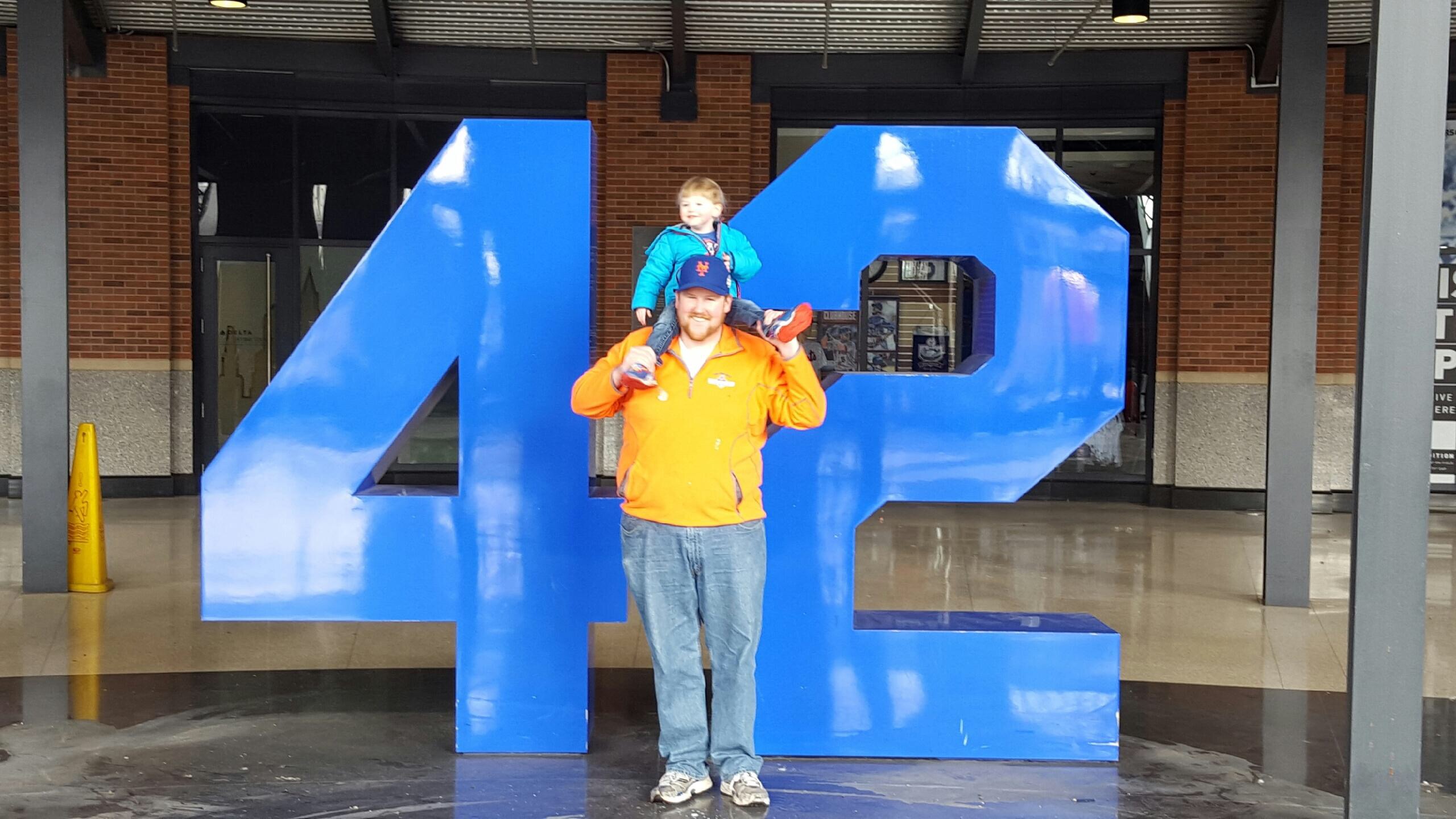
There are many things right about the Jackie Robinson Rotunda. However, the rotunda highlights one major flaw about Citi Field – Robinson is the only player that is celebrated there.
Sure, there are the retired numbers in left field. Also, there is the Mets Hall of Fame (which has also become an extension of the team store). However, is it really enough? If you are like many Mets fans and Nancy Seaver, the answer is a resounding no. As Nancy Seaver told the New York Daily News, “They should have a statue for all those numbers they have retired on their wall — Seaver, Gil Hodges, Mike Piazza.” She finds the fact that here isn’t one for her husband to be “ridiculous.” She sums up her feelings by saying, “I’m embarrassed for (the Mets). I really am.”
The fact of the matter is she’s right. At a minimum, there needs to be a statue for Tom Seaver. He is the Mets version of Babe Ruth.
Seaver has been the greatest player to ever don a Mets uniform. Considering the mind boggling stats he put up, it is next to impossible to imagine a scenario where there will come another player who will legitimately challenge Seaver’s place in Mets history. He helped turn the Mets around from a losing franchise to a team that miraculously won the 1969 World Series. He was the ace of a staff that almost won a second unlikely World Series in 1973. He’s the Mets all-time leader in wins, ERA, innings pitched, strikeouts, complete games, and shutouts. It’s one of the many reasons Seaver has been dubbed The Franchise. The Mets reputation as being a traditionally pitching rich organization began with him. It’s why he was the first player to have this number retired by the Mets. It’s why the Mets chose him to throw out the last pitch at Shea Stadium and the first pitch at Citi Field. It’s why he was elected to the Hall of Fame with the highest voting percentage ever given to a pitcher. It’s why he needs to have a statue featuring him with that classic leg drive:

Any argument against the Seaver statue is ill conceived:
- It’s too costly – You’re a major league franchise in New York. You can afford a statue.
- Seaver can’t travel for the unveiling – Hodges’ number was retired posthumously. It’s about honoring a player properly, not about attendance.
- There’s nowhere to put it – First, you found a spot for the old Home Run Apple. Second, there are empty places in and around the ballpark. If it’s important to you, you find a spot.
- It would diminsh the importance of the Jackie Robinson Rotunda – It won’t.
- Building one for Seaver means the Mets will have to build ones for other Mets Hall of Famers – So what? There are only two of them so far. I think the team can manage that.
Other than that, what possible reason is there for not having a statue? There is no legitimate reason.
The time has long since passed to build a statue in Seaver’s honor. As many have done before, Nancy Seaver shone a light on the issue. She’s right that it is embarrassing that the Mets won’t honor the greatest player in their history. It’s time for the Mets to right that wrong and build the statue.
